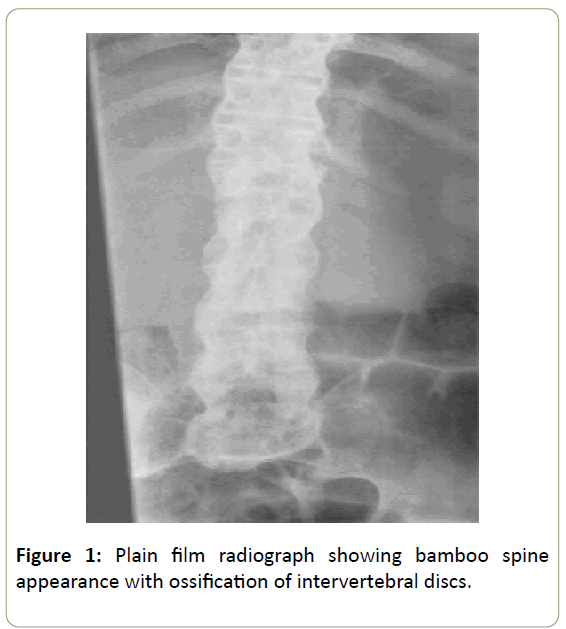

This is thought to be due to the association that both AS and uveitis have with the inheritance of the HLA-B27 antigen. Ībout 30% of people with AS will also experience anterior uveitis, causing eye pain, redness, and blurred vision. Less commonly ectasia of the sacral nerve root sheaths may occur. In prepubescent cases, pain and swelling may also manifest in the ankles and feet where heel pain and enthesopathy commonly develop. When the condition presents before the age of 18, it is more likely to cause pain and swelling of large lower limb joints, such as the knees. Pain is often severe at rest but may improve with physical activity, but inflammation and pain to varying degrees may recur regardless of rest and movement.ĪS can occur in any part of the spine or the entire spine, often with pain referred to one or the other buttock or the back of the thigh from the sacroiliac joint.Īrthritis in the hips and shoulders may also occur. Systemic features are common, with weight loss, fever, or fatigue often present. Īs the disease progresses, loss of spinal mobility and chest expansion, with a limitation of anterior flexion, lateral flexion, and extension of the lumbar spine, are seen. Individuals often experience pain and stiffness that awakens them in the early morning hours. Initial symptoms are usually a chronic dull pain in the lower back or gluteal region combined with stiffness of the lower back. The signs and symptoms of ankylosing spondylitis often appear gradually, with peak onset being between 20 and 30 years of age. Illustration depicting ankylosing spondylitis The word is from Greek ankylos meaning crooked, curved or rounded, spondylos meaning vertebra, and -itis meaning inflammation. The condition was first fully described in the late 1600s by Bernard Connor, but skeletons with ankylosing spondylitis are found in Egyptian mummies. Women are more likely than men to experience inflammation rather than fusion.

Over time MRIs were developed which could identify inflammation. Men are more likely than women to experience changes to the bones and fusion, and thus they were being picked up using X-ray. This was based on a diagnosis of the disease using X-ray. It used to be thought that three times as many men as women had the disease. īetween 0.1% and 0.8% of people are affected. Medications used include NSAIDs, steroids, DMARDs such as sulfasalazine, and biologic agents such as TNF inhibitors. This may include medication, exercise, physical therapy, and surgery in rare cases. Treatments may improve symptoms and prevent worsening. There is no cure for ankylosing spondylitis. It is also within a broader category known as axial spondyloarthritis. AS is a type of seronegative spondyloarthropathy, meaning that tests show no presence of rheumatoid factor (RF) antibodies. Diagnosis is typically based on the symptoms with support from medical imaging and blood tests. The underlying mechanism is believed to be autoimmune or autoinflammatory. More than 85% of those affected in the UK have a specific human leukocyte antigen known as the HLA-B27 antigen. Īlthough the cause of ankylosing spondylitis is unknown, it is believed to involve a combination of genetic and environmental factors. Stiffness of the affected joints generally worsens over time. Back pain is a characteristic symptom of AS, and it often comes and goes. Occasionally other joints such as the shoulders or hips are involved. Typically the joints where the spine joins the pelvis are also affected. NSAIDs, steroids, DMARDs, TNF InhibitorĪnkylosing spondylitis ( AS) is a type of arthritis in which there is a long-term inflammation of the joints of the spine. Symptom based, medical imaging, blood tests Bekhterev's disease, Bechterew's disease, morbus Bechterew, Bekhterev–Strümpell–Marie disease, Marie's disease, Marie–Strümpell arthritis, Pierre–Marie's disease Ī 6th-century skeleton showing fused vertebrae, a sign of severe ankylosing spondylitis


 0 kommentar(er)
0 kommentar(er)
